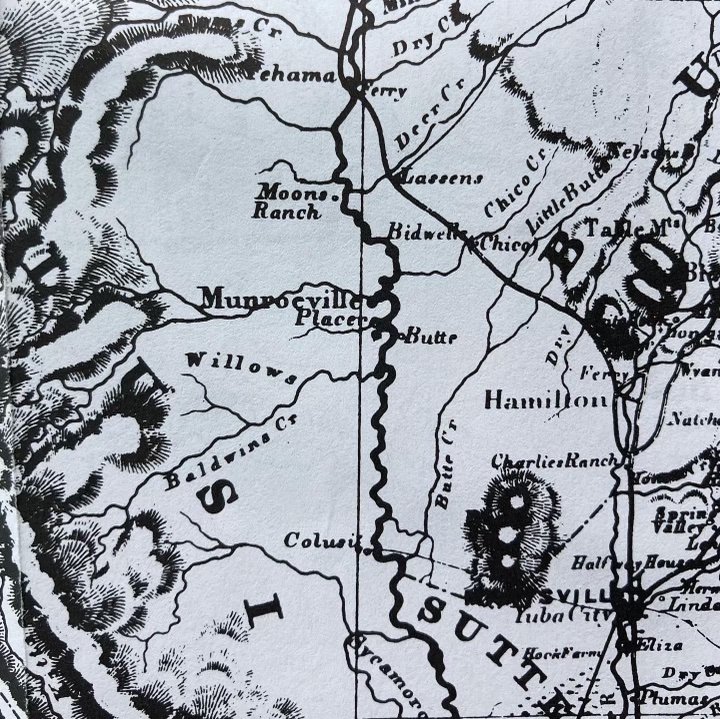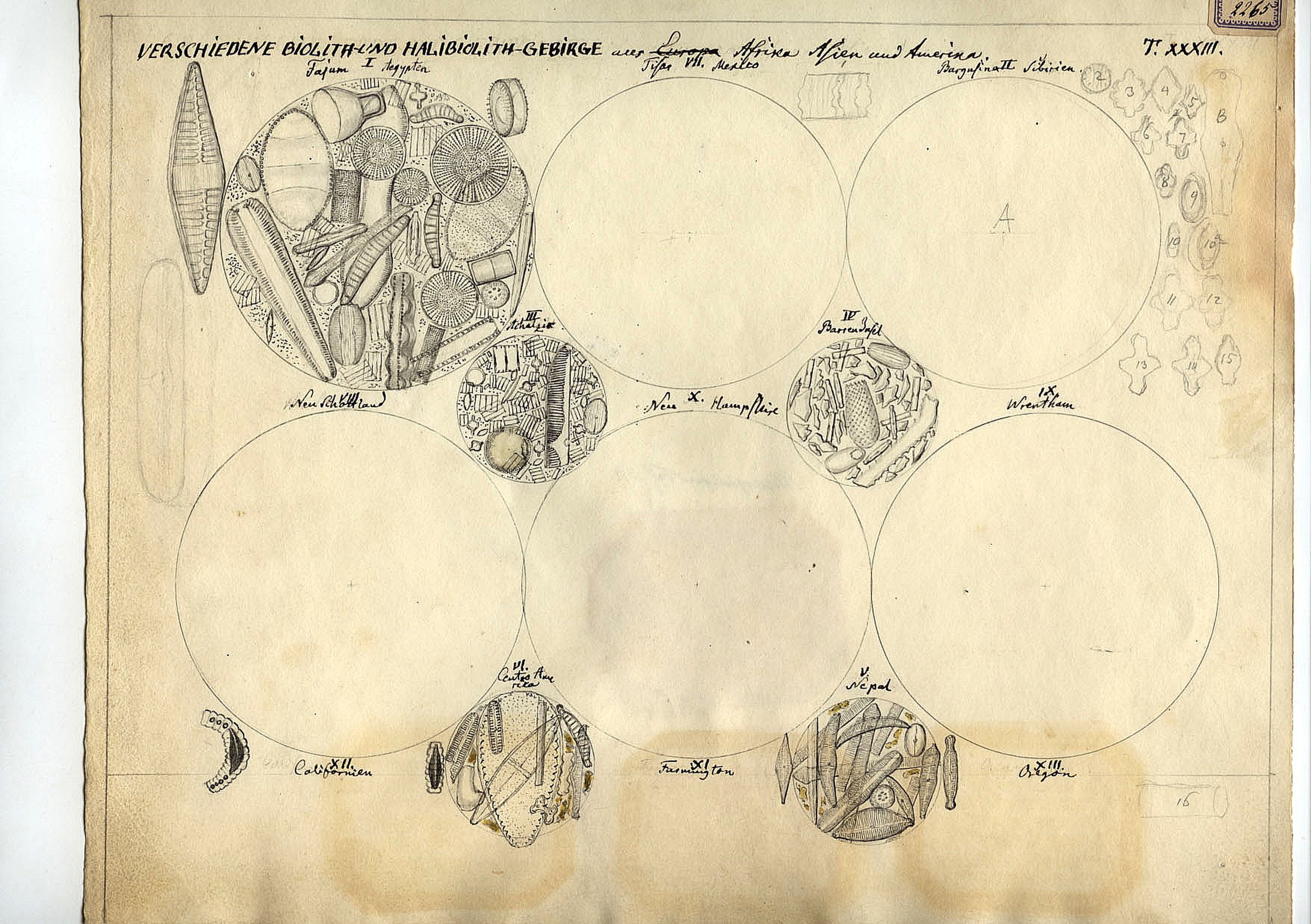The Sacramento River at
Monroeville Ghost Town, California
The Sacramento River at Monroeville, California, 2022 — Ink, watercolor, algae pigment, and forest fire charcoal on paper
This sample is another one of the series from the Sacramento River. Listed with the name of Bailey who is almost certainly Jacob Bailey associated with several scientific expeditions, including the Frémont expedition that is the likely source of this sample.
Californien Bodega Bay. Jetzt lebende Diatomeen. Bailey. 1858. 3788. Notiz: den inliegenden Sand habe ich am 6ten April Mittags 2 Uhr aus dem Sacramento River circa 200 Meilen (der Länge des Flusses nach gemessen) oberhalb Sacramento City genommen. Ich füllte noch etwas Wasser von derselben Stelle in die Flasche, liess es einen […] Tage danach stehen, und trocknete es dann sorgfältig. der Platz wird Monroville genannt und liegt etwa 150 Meilen oberhalb.
California Bodega Bay. Now living diatoms. Bailey. 1858. 3788. Note: the inlying sand I took at 2 p.m. on April 6th from the Sacramento River about 200 miles (by the length of the river) above Sacramento City. I poured some more water into the bottle from the same spot, left it for a […] day after, and then carefully dried it. the place is called Monroville, and is about 150 miles above.
This sample has many details about it, including what was taken and the sample preparation. In the hand written ledger this sample is listed as ‘sand’ which is indicated by this note as well.
Monroeville (variously spelled, here Munroeville) appears on an 1854 California map but later disappears from records
Monroeville, variously spelled in records, is now a ghost town site marked by a pioneer cemetery. The town site is gone, subsumed by the almond orchards, rice fields, and massive agriculture of the Sacramento Valley. Most of the land surround the river is private ranch land and property, so my sample was taken as close to the original town site as possible at the Bidwell-Sacramento River State Park. Samples were taken under incredibly thick smoke from the Dixie Fire in 2021, with poor visibility and rolling haze.
The Sacramento River taken near the Monroeville ghost town site.
Dr. Ehrenberg’s observations
Images of roundels with various microorganisms, including a seemingly unfinished California composition. Image used with permission from the Natural History Museum of Berlin.
Unfortunately Dr. Ehrenberg’s collection does not have extensive illustrations from these samples. Many of the assemblages we have in the collection were produced for earlier published works like Mikrogeologie, published in 1854.
All Californian illustrations seem to depict marine diatoms other sample collections, so direct specimen study will be needed to compare the samples.
My observations
Since the artistic record here has holes, my samples cannot be directly compared to the historical illustrations. I attempted to collect sediment as well as water from this area to stay authentic to the original sandy sample collected. Due to landscape changes, little sand is actually present near the tributary sites.
I found many organisms in this sample, including Anabaena cyanobacteria, a variety of desmids, Nitzschia, Cymbella, and other diatoms. I believe the cyanobacteria presence was due to a large algae bloom in the Mud Creek, a nearby tributary.
Algae bloom on Mud Creek, a nearby tributary of the Sacramento River at Monroeville.














